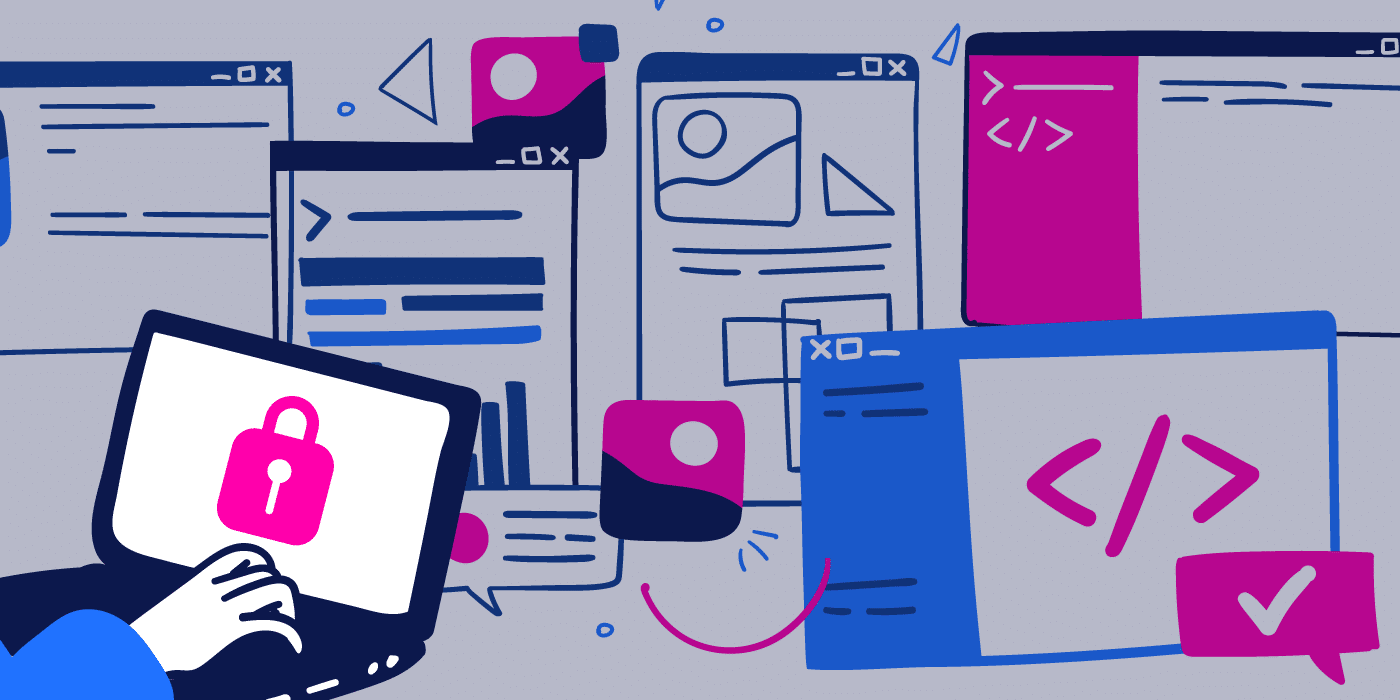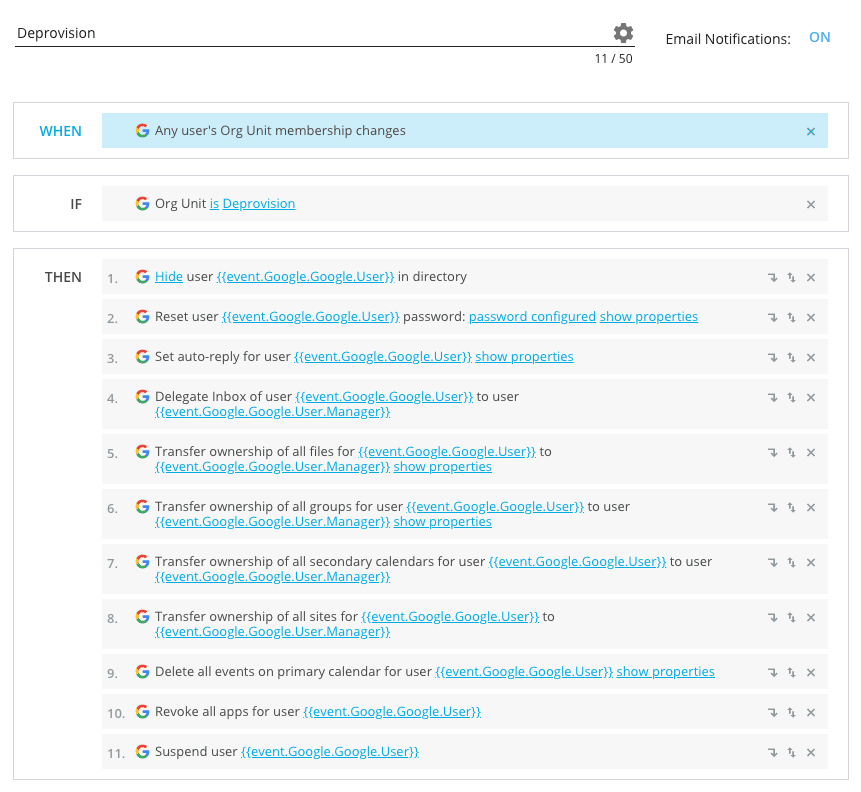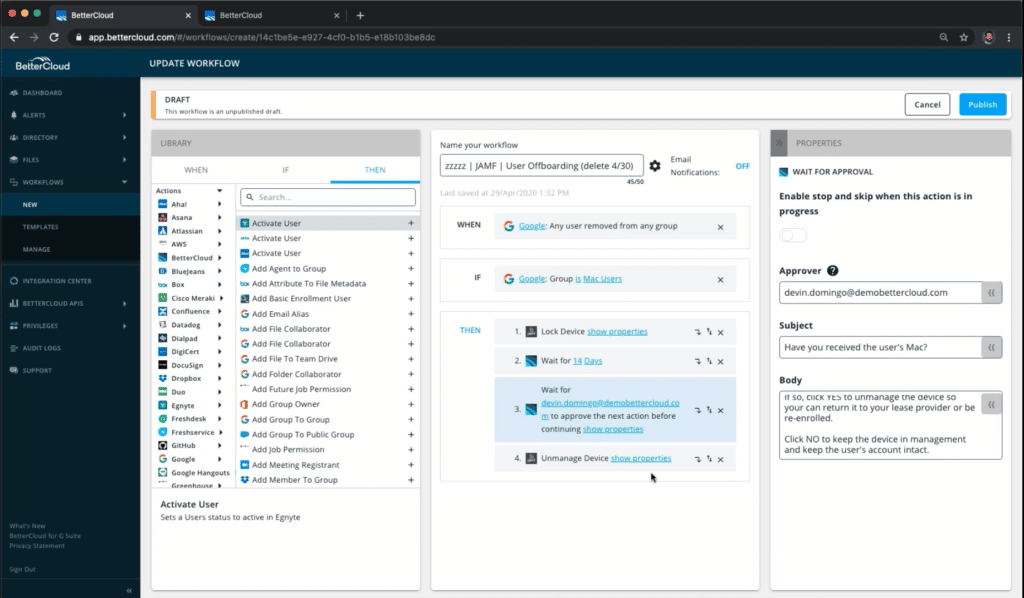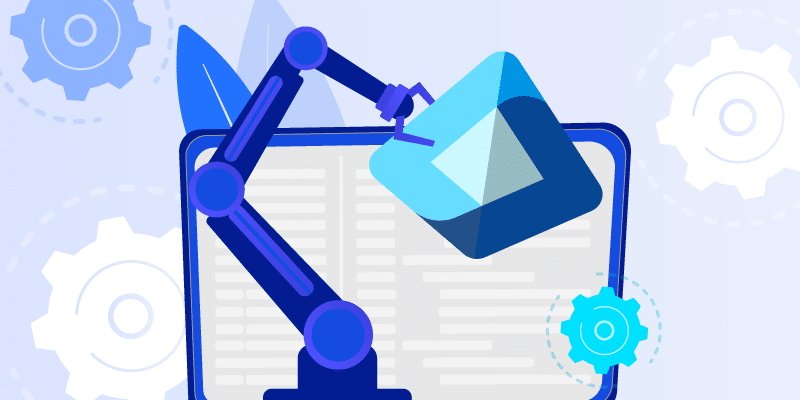Why Offboarding Is More Than Just Removing Access to SaaS Applications
January 21, 2022
4 minute read

What would happen if I shouted the word “offboarding” in the middle of a room full of IT administrators? “We’ve automated offboarding,” many of them would respond. “And we should have done it sooner, because we’ve never had this many apps in our SaaS stack.”
We know this isn’t the wrong answer. We also know that we’ll be using SaaS for the rest of our careers, so of course IT’s top priority is to remove access to those apps when someone leaves the organization.
But the offboarding process isn’t complete when you’ve revoked access to business applications. There are several aspects of offboarding that would be easy to gloss over, but are just as critical as ensuring that your former colleagues can’t send you messages on Slack.
Let’s take a closer look at a few other nuances of offboarding—and how BetterCloud can help you automate (most of) them.
Managers need access to their former employees’ data and calendars
The first question I ask when IT folks talk about transferring a former employee’s calendars is, “Why bother? My manager probably knows that our check-ins would be canceled if I quit my job.”
But as I was recently reminded by Dennis Irizarry, senior IT specialist at BetterCloud, it’s really important for managers of client-facing employees to gain access to their data and calendars when they leave the organization. Sales managers, for example, might need to confirm the details of a sale by reviewing a document owned by the former employee—or in some cases, they might need to join a previously scheduled call in order to save a deal.
And as you probably guessed, you can automate the data and calendar transfer process in BetterCloud. In the image below, you’ll see a sample offboarding workflow that automatically transfers ownership of calendar events, email inboxes, and files to a manager whenever a user’s Org Unit changes.

Could you technically ask the departing employee to manually transfer a calendar or a few files? Sure. But let’s be honest, that person would probably (likely) forget a few. By automating these data and calendar transfers, IT can make a significant impact on the entire business by ensuring that teams can stay productive after an employee departs the organization.
IT (really) needs to retrieve deactivated users’ computers
After application access has been revoked, it doesn’t matter if the employee still has their company-issued computer, right? Wrong. Come on.
Computer retrieval is an interesting challenge for IT, especially as companies continue to embrace remote work. At the risk of stating the obvious, you can’t automate the physical retrieval of a computer. BetterCloud workflows are really powerful, but they can’t drive to someone’s house and pick up a computer for you.
But as we covered in a previous blog post, you can leverage BetterCloud to render a former employee’s device useless with our Jamf integration. In the screenshot below, you’ll see how a workflow can do the heavy lifting.

While some IT administrators add Jamf actions into a master offboarding workflow, you’ll see in this example that we’ve created a Google Workspace Group for all Mac users. Once someone is removed from that group, a few things happen:
- The user’s device is locked using a passcode set by IT
- The IT admin receives an email 14 days later to confirm if he or she has received the deactivated user’s laptop
- If the IT admin has received the laptop, he or she can put the machine back into rotation by clicking YES
At the end of this workflow, you still need to wait for the employee to ship their computer back to the company. But locking the device in advance eliminates the possibility that the former departing employee can download sensitive business documents or client lists.
Managers need to be notified
What happens when all of the offboarding nitty gritty is complete? You should probably give that person’s former manager a heads up.
That sounds simple, but we live in unique times. And in these unique times, a lot of people are leaving for new jobs. Which means that IT is offboarding a lot of people. And without automation, that means IT needs to send a lot of emails to managers manually.
In the image below, you’ll see how IT can automate the finer details such as manager notification by adding a step to an offboarding workflow. Bonus: The example below is from one of BetterCloud’s workflow templates. The manager in this example will receive an email and a Slack message when the offboarding workflow has completed.

I suppose an IT specialist like Dennis could just write an email manually to each manager after offboarding a user. Dennis could even save templates in Gmail, I suppose. After all, copying and pasting an email doesn’t take a lot of time, right?
But this introduces a lot of the same issues we see across, well, most manual IT tasks. You might notify a manager that someone’s offboarding process is complete when, in fact, there are a few items remaining on that person’s checklist. Or, you might notify a manager that the wrong employee has been offboarded.
These are annoying mistakes to deal with, especially as a manager prepares to backfill a role. And as if IT wasn’t already bogged down by enough manual work, copying and pasting notification emails takes administrators away from more strategic initiatives. Not only do offboarding workflows help keep things secure when a user departs your organization, but they keep everyone productive—especially the folks in IT.
These are just a few of the offboarding tasks that BetterCloud can help your IT organization do more efficiently with automation. Want to see how else we can optimize your offboarding process? Schedule a demo.






